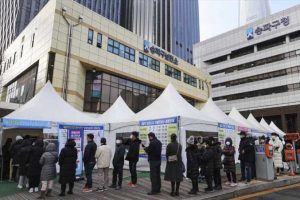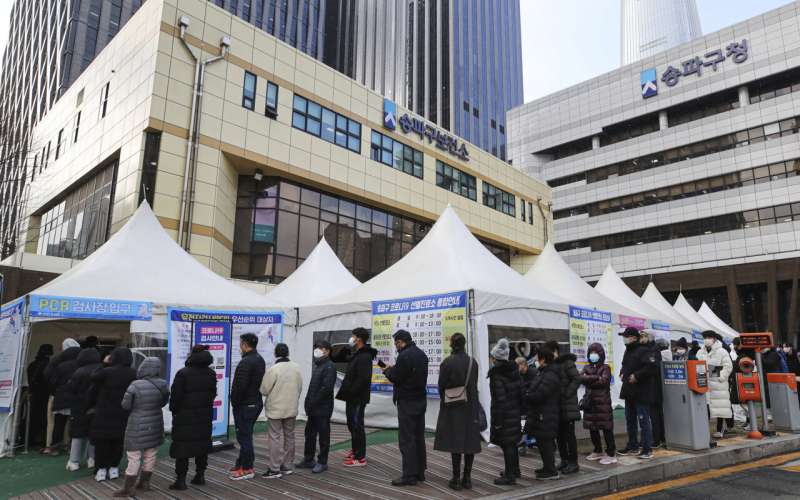S. Korean COVID deaths rise, hope rests on high booster rate


South Korea reported its highest number of COVID-19 deaths in a month Tuesday as U.S. health authorities advised Americans to avoid traveling to the country grappling with a fast-developing omicron surge.
The 61 deaths reported by the Korea Disease Control and Prevention Agency on Tuesday was the highest daily tally since the 74 reported on Jan. 19, when the country was emerging from an outbreak driven by the delta variant.
While omicron so far seems less likely to cause serious illness or death, the greater scale of the outbreak is fueling concerns that hospitalizations and fatalities could spike in coming weeks.
The 57,177 new cases reported by the KDCA was another one-day record and more than a 12-fold increase from the levels seen in mid-January, when omicron became the dominant strain.
The U.S. Centers for Disease Control and Prevention updated its travel notice for South Korea to level 4, the highest risk, advising Americans to avoid travel to the country or to make sure they are fully vaccinated if traveling is necessary.
Park Hyang, a senior South Korean Health Ministry official, said the country’s hospital resources remain stable, with less than 27% of intensive care units designated for COVID-19 currently being occupied.
Officials have expressed cautious hope the country’s high vaccination rate – with nearly 58% of a population of more than 51 million having received booster shots – would prevent hospital systems from buckling. They plan to start offering fourth vaccination shots to people at nursing homes and other long-term care settings later this month.
“While unvaccinated people account for only 6% of the population 12 years or older, these people have accounted for 62% of serious cases and 66.5% of the deaths over the past eight weeks,” Park said during a briefing.
South Korea has reshaped its COVID-19 response due to the unprecedented surge. It has significantly eased quarantine restrictions so essential services won’t be disrupted by having huge numbers of people in quarantine. More than 245,000 infected people were being treated at home as of Tuesday, weeks after at-home treatment was made the standard for mild or moderate cases.
Testing practices are also now centered around rapid antigen tests, with the more accurate laboratory tests reserved mostly for high-risk groups. But there are concerns that infected people may falsely test negative and continue to stay out in public, which could worsen the spread of the virus.
Source: Read Full Article